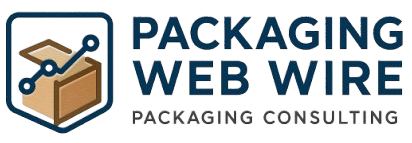The global plastic-free cosmetic packaging market is experiencing rapid growth, poised for a significant revenue surge between 2025 and 2034. As ecological awareness intensifies among consumers and regulatory frameworks tighten globally, demand for sustainable, innovative packaging in the cosmetics industry has skyrocketed. From paper-based solutions to bamboo and biodegradable composites, this market is driving a transformative shift towards eco-friendly beauty packaging.
Invest in Our Premium Strategic Solution: https://www.towardspackaging.com/download-sample/5663
Market Overview: Moving Beyond Plastic in Cosmetic Packaging
Plastic-free cosmetic packaging refers to solutions designed to eliminate conventional plastic materials, focusing instead on biodegradable, compostable, recyclable, and refillable alternatives. Materials include paper, glass, aluminum, bamboo, and emerging bio-based composites. These packaging innovations aim to mitigate plastic pollution, align with eco-conscious consumer preferences, and adhere to increasingly stringent environmental regulations.
Key Market Insights
-
Market Growth: Significant revenue expansion projected between 2025 and 2034.
-
Regional Leadership:
-
Europe dominated the global market in 2024, driven by strict eco-packaging regulations.
-
Asia Pacific is expected to grow at a notable CAGR during the forecast period.
-
-
By Material Type:
-
Kraft paper held the largest revenue share (28%) in 2024.
-
Biodegradable & compostable materials are projected to grow at the fastest CAGR.
-
-
By Product Type:
-
Serum bottles contributed 22% of the revenue share in 2024.
-
Deodorant sticks are anticipated to expand rapidly during the forecast period.
-
-
By Cosmetic Type:
-
Moisturizers held the major share (30%) in 2024.
-
Color cosmetics are projected to experience strong growth.
-
-
By End-User Brand Type:
-
Organic/natural brands accounted for 36% of market share in 2024.
-
Indie brands are expected to grow at a significant CAGR.
-
-
By Distribution Channel:
-
E-commerce platforms held 42% of market share in 2024.
-
DTC (Direct-to-Consumer) brand websites are poised for notable expansion.
-
If there’s anything you’d like to ask, feel free to get in touch with us @ sales@towardspackaging.com
Market Drivers: Trends Fueling Growth
1. Regulatory Push and Consumer Demand for Eco-Friendly Products
Global initiatives to curb plastic waste and enforce sustainable practices are propelling brands to rethink packaging strategies. Consumers increasingly demand plastic-free, refillable, and compostable options as part of their commitment to environmental responsibility.
2. Innovation in Materials and Design
Paper-based packaging, particularly Kraft paper and molded fiber, is favored for its customization and printability. Glass and metal packaging are gaining traction for their recyclability and premium appeal, while biodegradable materials such as PLA (polylactic acid) and mushroom packaging are emerging as disruptive alternatives.
3. Growth of Organic and Indie Brands
The rise of organic and indie cosmetic brands has catalyzed innovation in sustainable packaging, with these players often leading in plastic-free initiatives to differentiate themselves in a competitive market.
4. E-commerce Expansion
The surge in online sales has increased the demand for eco-friendly secondary packaging solutions like folding cartons and paper-based mailers, further fueling market growth.
Recent Industry Developments
-
March 2025: FANCL launched its “toiro” skincare line featuring reusable packaging to promote sustainable beauty practices.
-
June 2025: Shellworks unveiled fully home-compostable pipette dropper packaging, setting a new standard for eco-packaging innovation.
-
March 2025: Eastman’s Tritan material was selected by FANCL for its durability, chemical resistance, and sustainable profile.
Regional Insights
Europe: Setting the Benchmark in Sustainability
Europe continues to lead the global market due to its robust regulatory framework and consumer preference for eco-friendly products. Governments have mandated plastic-free packaging for various sectors, positioning the region as the epicenter of innovation and adoption.
Asia Pacific: Emerging Growth Hub
Asia Pacific is poised for substantial growth with countries like Japan, South Korea, and India embracing sustainable beauty trends. The region’s booming cosmetic industry, coupled with rising environmental consciousness, is driving demand for plastic-free solutions.
North America: Driven by E-Commerce and Indie Brands
In North America, the growth of direct-to-consumer (DTC) beauty brands and heightened regulatory scrutiny are supporting the adoption of sustainable packaging practices.
Top Companies in the Plastic-Free Cosmetic Packaging Market
-
Quadpack
-
APC Packaging
-
Berry Global Inc.
-
WWP Beauty
-
Cosmogen
-
Luxe Packaging
-
Libo Cosmetics
-
HCT Group
-
Albéa Group
-
Packhelp
-
Pujolasos
-
Refillable Packaging Co.
-
Toly Group
-
Colpac Ltd.
-
Biopak
-
Ecologic Brands Inc.
-
James Cropper Plc
-
Green Packaging Asia
-
Montebello Packaging
-
Kaufman Container
Market Segmentation
By Material Type
-
Paper-Based (Kraft Paper, Corrugated Board, Molded Fiber)
-
Glass (Amber, Frosted, Clear)
-
Metal (Aluminum, Tin, Steel)
-
Wood and Bamboo (Bamboo, FSC-Certified Wood)
-
Biodegradable & Compostable Materials (PLA, Bagasse, Mushroom Packaging)
By Product Type
-
Bottles (Serum, Lotion, Toner)
-
Jars (Cream, Balm)
-
Tubes (Lip Balm, Toothpaste)
-
Sticks (Deodorant, Lipstick)
-
Boxes and Cartons (Folding Cartons, Rigid Boxes)
-
Others (Droppers, Dispensers, Refill Pods)
By Cosmetic Type
-
Skin Care (Moisturizers, Serums, Cleansers)
-
Hair Care (Shampoos, Conditioners, Hair Oils)
-
Color Cosmetics (Lipsticks, Eye Shadows, Foundations)
-
Fragrances
-
Oral Care
-
Men’s Grooming
-
Baby Care
By End-User Brand Type
-
Luxury Brands
-
Mass Market Brands
-
Organic/Natural Cosmetic Brands
-
Private Labels
-
Indie Brands
By Distribution Channel
-
Offline (Specialty Stores, Departmental Stores, Salons and Spas)
-
Online (E-commerce Platforms, DTC Brand Websites)
Future Outlook: Toward a Plastic-Free Beauty Industry
The plastic-free cosmetic packaging market is redefining beauty packaging with a focus on sustainability, innovation, and premium consumer experiences. Companies investing in bio-based materials, refillable systems, and closed-loop models are set to lead this transformation.
As e-commerce grows and indie brands challenge established players, the market is expected to witness accelerated innovation in both primary and secondary packaging solutions.
Source: https://www.towardspackaging.com/insights/plastic-free-cosmetic-packaging-market-sizing


